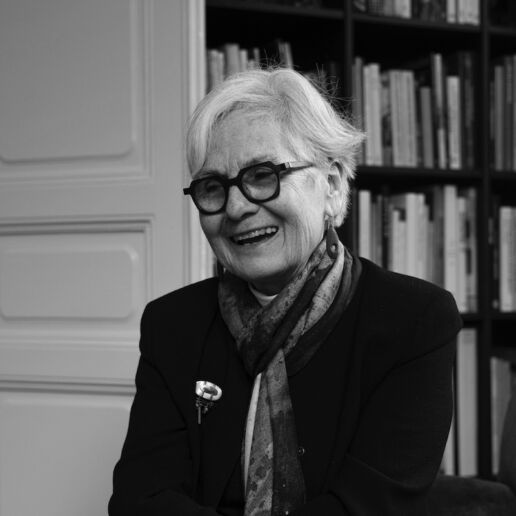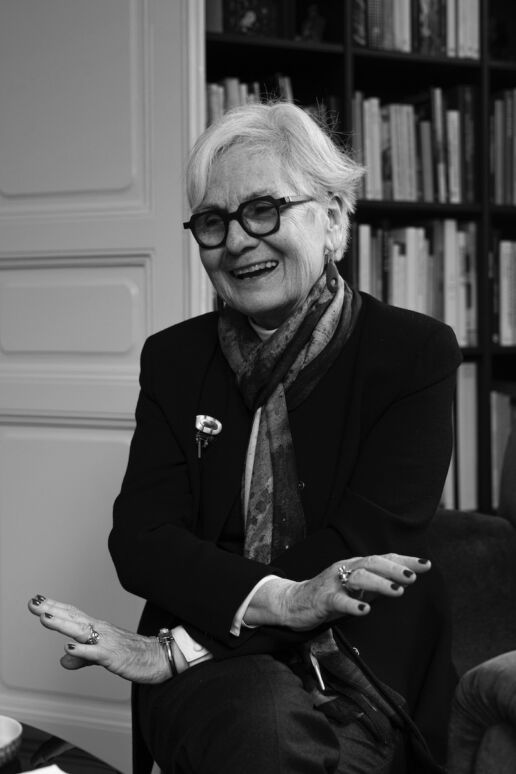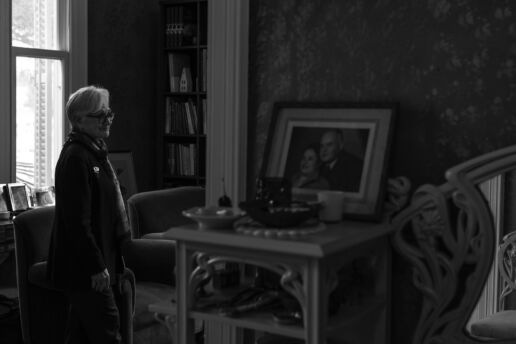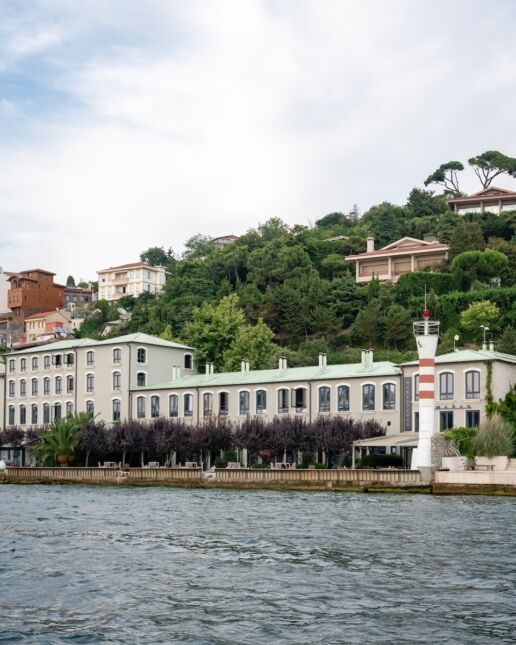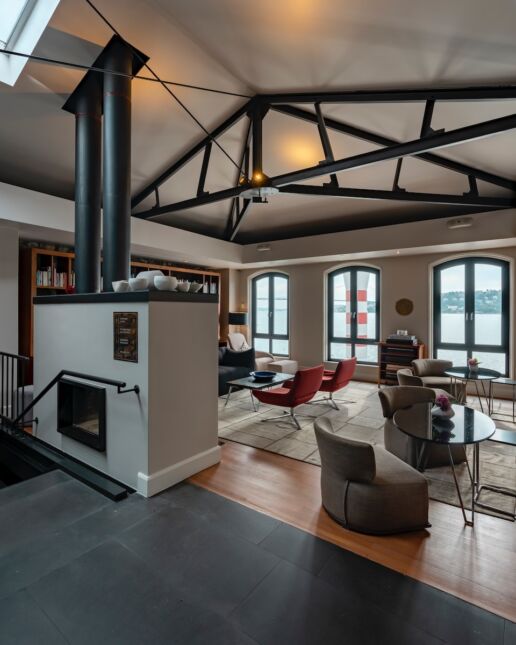“DON’T DESTROY, COMPLAIN, OR GIVE UP!”
I have walked through the gates of a historic mansion into a garden dotted with trees. I feel far from the chaos of the Çengelköy neighbourhood in Istanbul. After a warm welcome from the architects and hoteliers, Nedret and Mark Butler, I sit down with Nedret at their home to talk about the family's great labour of love, the fabulous Sumahan on the Water hotel, which is located not far away along the Bosporus. Sumahan opened in 2005 after the couple completed a decades-long transformation of her family's distillery. The project was the passion of two lifetimes, akin, perhaps, to raising a third extraordinary child.Photography Nazli Erdemirel
The frescoes on the walls fascinate me as soon as I step into the Çengelköy köşk belonging to Nedret and Mark Butler. Depicting floral motifs, the frescoes made by a Russian artist are the most distinctive feature of the house. The mansion once belonged to the Ottoman ambassador to Vienna, Mahmud Nedim Pasha, and has since been preserved in its original state by the Butler family. Nedret believes it was probably the ambassador’s summer house. ‘It’s like a scaled-down version of a big mansion,” she says. “The house was in a derelict state when Mark and I first came to Istanbul from America in 1971. My mother and my brother renovated this place, and we all lived here together for a while. My mother lived on the top floor, my brother on the ground floor, and we lived in the house next door. After dinner, my mother would come over for a coffee, walking along a pathway that connected the two houses. We used to call our back door the ‘Valide’s entrance’.”
She takes me to a suite that used to be her mother’s bedroom. After her father immigrated from the Balkans, Nedret’s mother, born in Istanbul, became one of the first female judges in Turkey. She has always been an important figure in Nedret’s life, a character who challenged and encouraged her. Nedret spent her childhood in their two-story house in Yeşilyurt during the summer and in Aksaray during the winter. She studied at Şişli Terakki Elementary School and then at Üsküdar American High School as a boarding student. For her, the high school remains symbolic of Istanbul, recalling the pistachio trees in Bağlarbaşı and her favourite ferry journeys.
SUMAHAN – THE PRODUCT OF A PASSION
She tells me that the story of Sumahan goes back to when her Bulgarian grandfather, industrialist Tevfik Cenani Ercan, purchased a 19th-century late Ottoman distillery in Çengelköy after immigrating to Turkey. “After graduating from the University of Minnesota with an architecture degree in 1972 and an urban planning degree from MIT in 1976,” she explains, “I knew that I wanted to turn my academic thesis into a reality: I had my mind set on restoring this historical building owned by my family and turning it into a hotel. Sumahan is a product of passions and ideals.” So, after returning to the city, she and her husband launched their own Istanbul office in 1998, M&N Butler Architecture. They began the arduous task of getting building permissions from the city, digging into renovations part-time as they built their architectural practice. The project was finally completed in 2005, more than 30 years after the dream was born, and the Sumahan as we know it emerged.
The name of the hotel is a combination of words that add meaning to the project. Suma is the purest form of alcohol distilled from fruit. Nedret came up with the name Sumahan by combining the word suma with the word han, or inn, inspired by the title of her thesis, “A Modern Caravanserai in Istanbul”. The most exceptional aspect of this story is that every element of the design is purposeful and related to Nedret’s history. Traces of the Butler family’s tastes are visible in every corner of the Sumahan.
TRANSFORMATION
Nedret had certain priorities for Sumahan on the Water: First, the atmosphere of the place had to make guests feel that they were staying in Çengelköy. Second, they had to have a good view of the Bosporus. Both she and Mark are designers focused on the urban fabric, so they evaluated the building in the context of its surroundings. “Our philosophy in architectural projects is to turn the location into an advantage. We don’t destroy, complain, or give up,” she says.
Sumahan is a listed historical building, so the couple made no changes to the exterior at all. Part of the structure had survived in its original state, but one section had collapsed. They found old pictures and restored the damaged sections based on those. They preserved the steel French trusses in the old part of the industrial building, and built the new section from steel, as well, taking cues from the original architecture. They worked meticulously to ensure they maintained its historical feeling and texture. Nedret also collaborated with her daughter, interior designer Yasha Butler, to choose all the interior details, colours, fabrics, furniture and lighting, and to design the hotel’s spa, guest rooms and restaurant. No artwork was used in the guest rooms. The aim was to preserve the Bosporus as the focal point of the architecture and keep the furniture and interior in the background.
‘IT’S BETTER TO HAVE A DREAM THAN NOT TO HAVE ONE!’
Guests enter from the main street, descend two floors and find themselves in a completely different world. The topography of the area creates a difference in elevation, making Sumahan feel like a hidden haven in the city. “When I graduated, my professors asked me, ‘Nedret, when will you complete this hotel and invite us to stay?’ I told them it would not be any time soon. One of them said, ‘Nedret, it is better to have a dream than not to have one.’ I remember that like it was yesterday. I believed in this dream through all of our struggles and I still believe in it.”
When the two first conceived the idea in 1972, opening the hotel was their only dream. They had numerous meetings with hotel chains and tourism ministers, but no one wanted to invest in the project. Without funding, they decided to invest in it themselves. The building is a listed monument subject to the strict rules of the Bosporus zoning plan. Getting the permits to do the work was a lengthy process. Dealing with the bureaucracy was Nedret’s responsibility, a very difficult and painful task. She believes it may be one of the city’s first conversions of an industrial complex into a hotel.
The Butlers ran the Sumahan for almost 20 years, however, it is now leased long-term and managed by the Vakko brand. Nedret was surprised to receive a call from Vakko. “I’m sure a lot will change in the interiors of the hotel – Mark was more accepting of the idea than I was – but I’m sure Vakko will preserve the spirit of Sumahan. I remember Vitali Hakko, long ago, in his white apron, greeting his customers one by one at his flagship Beyoğlu store.” Indeed, the Sumahan that exists today shares their vision. As architects with great dedication, the Butlers made the decision to refurbish this family treasure, which has been in the family for five generations, in great part to be able to share it with others. But today, Nedret is also free to take on new projects. “There were times when I questioned myself and wondered if I was doing the right thing. A close friend of ours said, ‘You are giving your third daughter to a perfect husband from a good family.’ My youngest daughter Eren would say, ‘Mom, Sumahan is like our sister.’ Certainly, Sumahan will always feel like our third child.”
I ask her what they plan to do next after running a business with so much gusto. “M&N Butler Architects never had a website. Firstly, we want to create an archive of our projects,” she says. “Another thing I have been asked to do for a long time is to write the whole story of Sumahan. I also want to do a project about my mother who was vibrant and had such good taste. Going to the tailor was once seen as an excuse to socialise. I had no idea back then that she had hundreds of period pieces, and something for every season, in her wardrobe. I had 300 of her garments and accessories professionally photographed and catalogued, with the goal of creating a book and an exhibition from them one day.” Looking at the Atatürk portraits, watches, and period clothing Nedret showed me during this visit, I am convinced that her mother was a savvy collector.
“The other thing I want to do is to support art and cultural activities,” she says. “And my dream now, following some inspiring visits to Rome, is to set up a small residency program for architects, art historians and designers in the historic setting of Çengelköy.” By the end of our time together, I realise that all the projects and ambitions we’ve talked about, with their deep ties to Istanbul, have a much deeper meaning for the Butler family than meets the eye. I say goodbye to them with an indescribable feeling of nostalgia. But I’m also eagerly looking forward to everything that they will continue to give to this city in the future.


